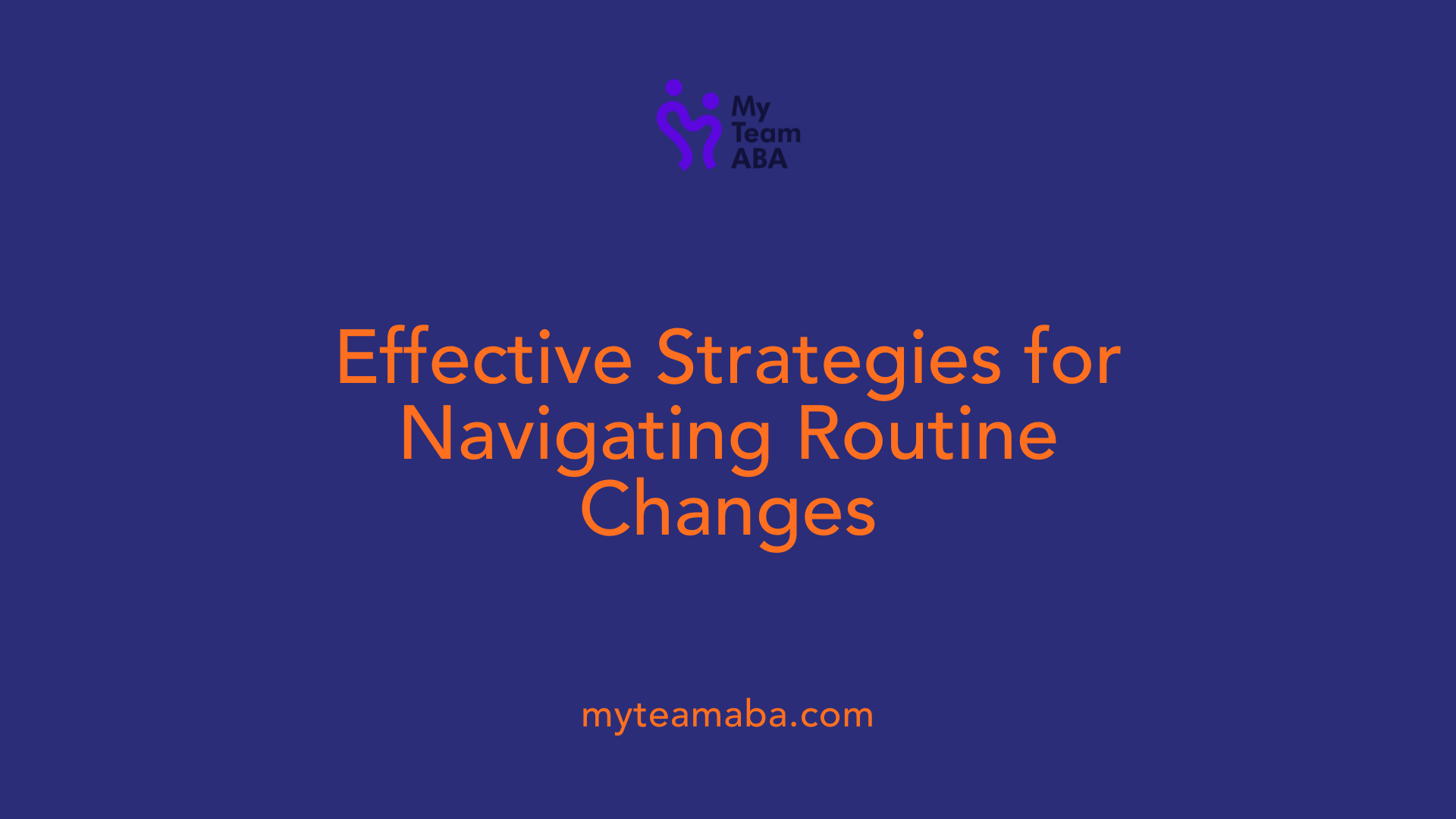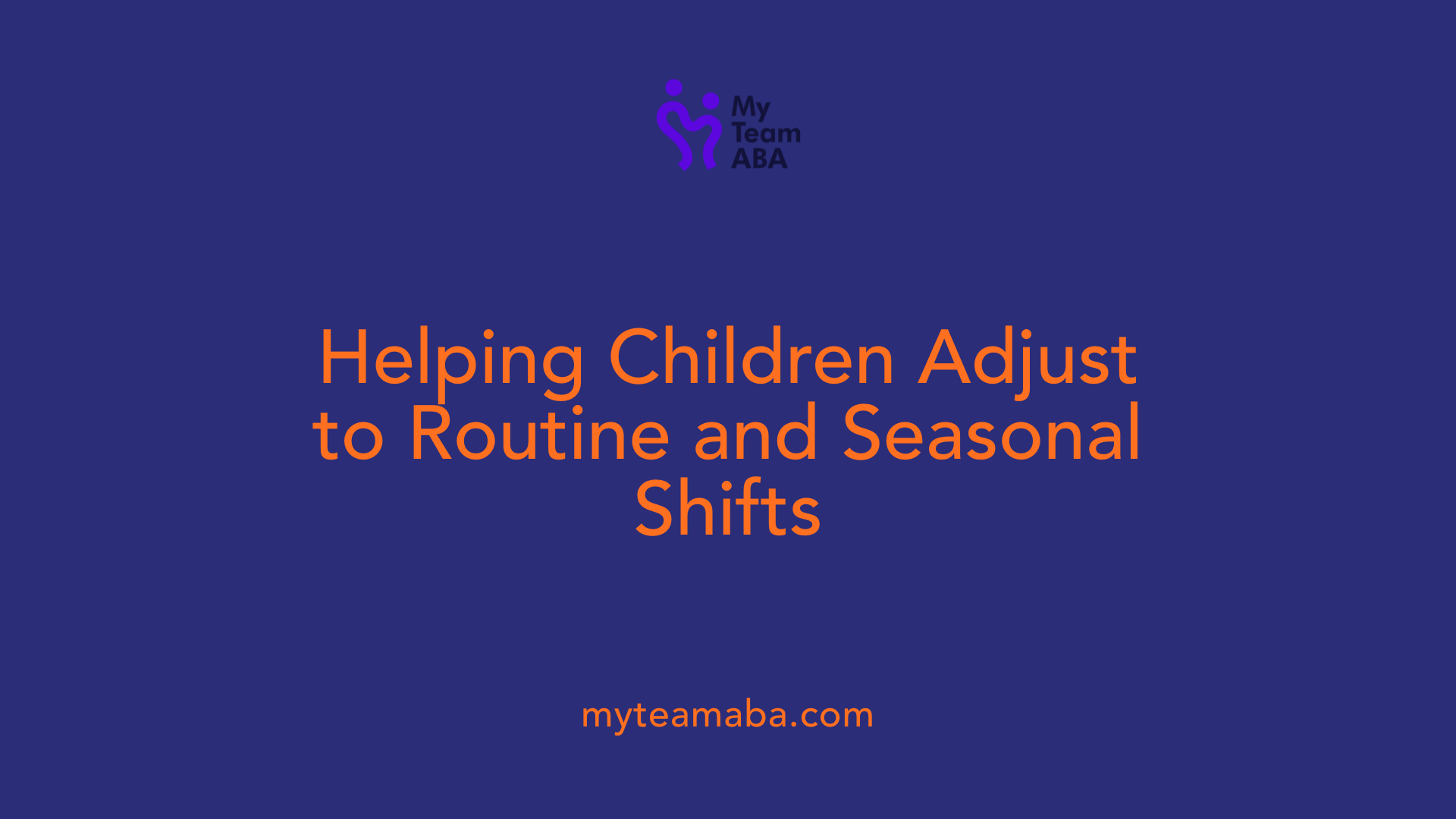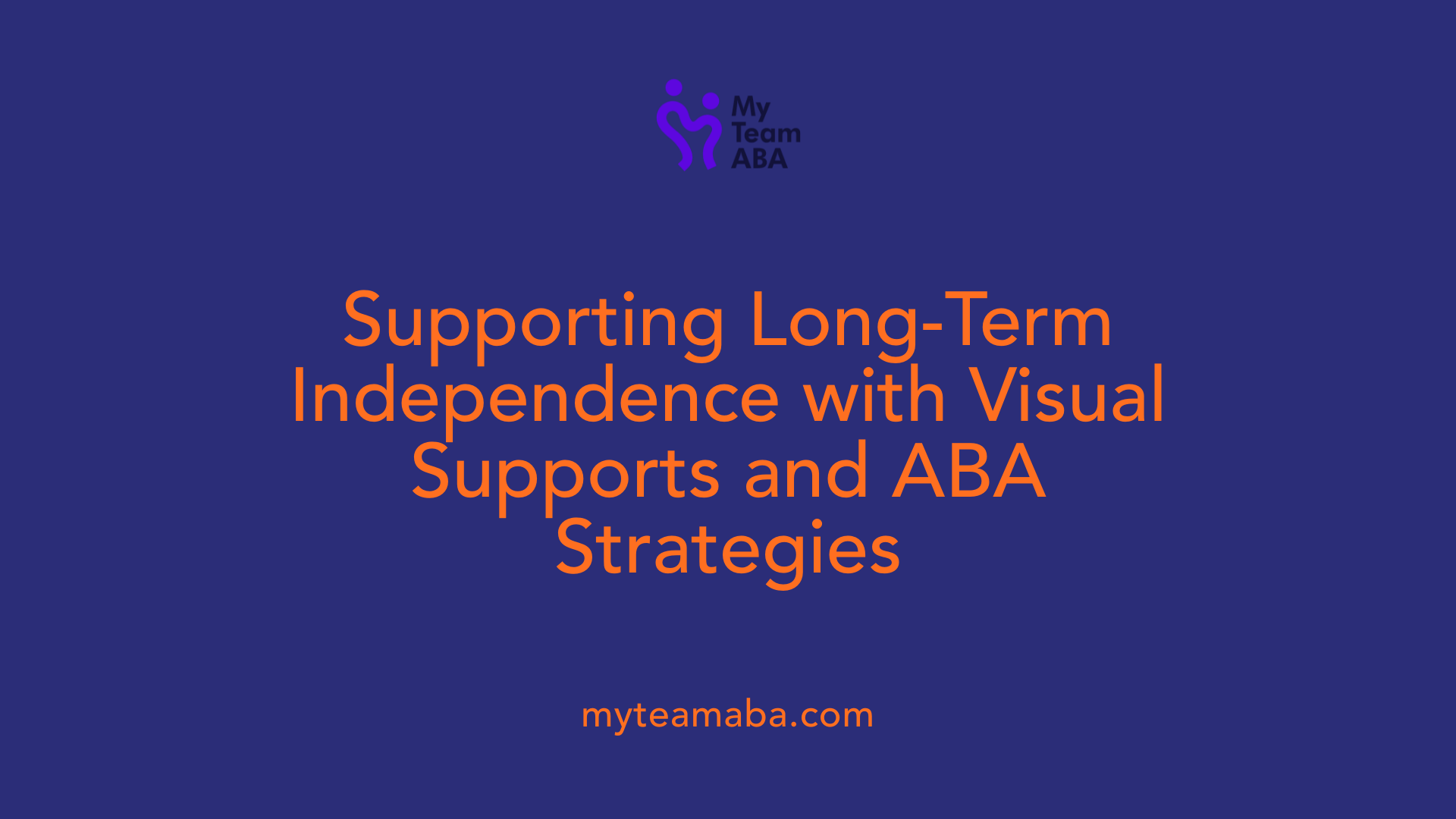How ABA Therapy Helps Children Navigate Changes in Routine
July 24, 2025
Building Resilience in Children with ABA Strategies

Understanding the Power of ABA in Routine Transitions
For children with autism, navigating changes in daily routines can be a significant challenge, often leading to increased anxiety and behavioral difficulties. Applied Behavior Analysis (ABA) offers evidence-based tools and strategies designed to guide children through these transitions with greater ease and confidence. This article explores how ABA therapy supports children during routine changes, emphasizing visual supports, gradual exposure, and caregiver collaboration to foster adaptability and emotional well-being.
The Role of Visual Supports in Routine Management

What are visual schedules like pictorial or written schedules?
Visual schedules are tools that present daily routines and upcoming events in an organized, easy-to-understand format. These can be picture-based, using images or icons, or written with words, depending on the child's comprehension level. By displaying routines visually, children can better grasp what to expect next, which helps in reducing anxiety and promoting independence.
How do PECS, timers, countdowns, and First-Then Boards assist children?
Other visual supports such as PECS (Picture Exchange Communication System), timers, countdowns, and First-Then Boards further enhance predictability. PECS enables children to communicate their needs using pictures, while timers and countdowns visually represent the passage of time, preparing children for transitions. First-Then Boards clarify the sequence of activities, helping children understand what comes next and encouraging compliance through clear, simple cues.
How do visual supports help children understand and anticipate changes?
These tools provide a structured way for children to process upcoming changes. Visual schedules and supports make routines transparent, allowing children to anticipate transitions rather than be surprised by them. Knowing what to expect reduces their anxiety and makes transitions feel safer and more manageable. Consistent use of visual supports during routine changes, such as seasonal shifts or schedule adjustments, fosters adaptability and emotional regulation.
How does ABA therapy enhance management of routine and seasonal transitions?
ABA therapy leverages visual supports to help children cope with routine changes and seasonal shifts. By creating predictable schedules, introducing changes gradually with social stories, and teaching flexibility through controlled modifications, children learn to adapt with less stress. The therapy also incorporates strategies like visual schedules, timers, and social stories to prepare children for new environments or routines, making transitions smoother.
How do visual supports and ABA therapy together foster smoother routines?
Combining visual tools within ABA strategies offers a comprehensive approach to managing changes. Visual supports help children understand and anticipate upcoming routines, while ABA provides systematic reinforcement, emotional regulation techniques, and coping strategies. This integrated approach promotes independence, reduces anxiety, and supports children in navigating both everyday and seasonal routine transitions effectively.
| Visual Supports | Role in Routine Management | Additional Features |
|---|---|---|
| Pictorial Schedules | Show daily routines visually | Icons, photographs |
| Written Schedules | Text-based routine overview | Words, lists |
| PECS | Facilitate communication of needs | Pictures exchange |
| Timers & Countdowns | Visualize time remaining | Clocks, countdown timers |
| First-Then Boards | Clarify sequence of activities | Visual sequence |
Understanding how visual supports aid in routine transitions can empower caregivers and educators to implement effective strategies, making daily changes less stressful for children with autism.
Strategies to Facilitate Successful Routine Transitions
 Autistic children often face challenges when routines change, but tailored strategies can promote smoother adjustments. ABA therapy plays a central role in supporting these transitions through several methods.
Autistic children often face challenges when routines change, but tailored strategies can promote smoother adjustments. ABA therapy plays a central role in supporting these transitions through several methods.
One essential approach involves the use of visual supports such as picture-based schedules, written routines, timers, and countdowns. These tools provide predictability by visually outlining what activities will happen and when. For example, a visual schedule might show the sequence of daily events, helping children anticipate and mentally prepare for upcoming changes.
Gradual exposure and rehearsals also help children adapt. Visiting new environments beforehand or practicing transitions through role-playing reduces surprises and builds confidence. Additionally, social stories explain upcoming changes in a simple, reassuring manner, answering questions children might have and easing their anxiety.
Consistency remains vital during unpredictable periods. Maintaining familiar routines, even during vacations or seasonal shifts, offers a sense of stability. Structured activities, visual supports, and clear cues all contribute to reducing behavioral challenges that may arise from change.
Supporting emotional regulation is equally important. Creating a calm down area or providing reassurance during transitions allows children to manage sensory overload or stress. Open communication, validating their feelings, and giving advance warnings foster a sense of control and security.
Overall, combining visual tools, gradual exposure, and consistent routines enables children with autism to navigate routine shifts with greater ease, fostering independence and reducing anxiety.
Supporting Children During Routine Changes and Seasonal Shifts

How can parents and caregivers effectively use ABA techniques to navigate routine transitions?
Parents and caregivers can support children with autism during routine changes by employing a variety of Applied Behavior Analysis (ABA) strategies. Visual supports, such as visual schedules, picture charts, and social stories, help children see and understand upcoming changes, which reduces uncertainty and anxiety. These tools prepare children in advance and make transitions smoother.
Countdown timers and transitional objects serve as reminders for upcoming changes, offering reassurance and building anticipation. Engaging activities like music or preferred games can also motivate children and make transitions more enjoyable. Reinforcement is crucial; positive feedback, praise, or small rewards encourage children to adapt to new routines.
Furthermore, teaching children to recognize directions, express their emotions, and develop independence skills with targeted ABA interventions ensures they are equipped to handle transitions. Working closely with professionals allows for personalized strategies that meet each child's unique needs.
How do ABA techniques assist children with seasonal and environmental changes?
ABA therapy provides structured approaches to help children manage the shifting seasons and environmental changes. For example, establishing flexible, clear schedules that account for weather variations and new clothing needs helps reduce anxiety related to seasonal shifts.
Using gradual exposure techniques and positive reinforcement helps children become comfortable with changes like colder weather or new routines associated with seasonal activities. Emotional regulation skills are also cultivated, teaching children how to identify and express feelings about these changes, which in turn lowers frustration and outbursts.
Visual supports, such as social stories tailored to seasonal transitions, prepare children by explaining what to expect — for instance, going back to school after summer or adjusting to shorter daylight hours. These strategies build confidence and independence, ensuring children can navigate environmental shifts with less stress.
| Technique | Purpose | Example |
|---|---|---|
| Visual schedules | Clarify routines | Weekly calendar showing seasons and activities |
| Social stories | Explain changes | Story about wearing jackets in winter |
| Gradual exposure | Build comfort | Visiting new environments gradually |
| Positive reinforcement | Encourage adaptation | Rewards for trying new routines |
| Emotional regulation teaching | Reduce outbursts | Recognizing feelings related to weather |
By integrating these methods, ABA therapy supports children in managing seasonal changes while promoting emotional well-being and adaptive skills.
Enabling Smooth Transitions for Long-Term Independence
 Maintaining consistent support during periods of change is vital for children with autism, especially when returning to school after breaks or facing holiday festivities. Continuing Applied Behavior Analysis (ABA) therapy during these times offers benefits such as reinforcing previously learned skills, preventing regression, and facilitating smoother adaptation to new routines.
Maintaining consistent support during periods of change is vital for children with autism, especially when returning to school after breaks or facing holiday festivities. Continuing Applied Behavior Analysis (ABA) therapy during these times offers benefits such as reinforcing previously learned skills, preventing regression, and facilitating smoother adaptation to new routines.
ABA therapy employs visual supports like schedules, calendars, and social stories to prepare children for upcoming changes. These tools help children anticipate and understand routine shifts, whether it's a switch from summer activities to school routines or adjusting to holiday celebrations. Visual cues also serve as reliable references, easing anxiety and reducing resistance.
Adjusting routines around special events or holidays ensures that children experience stability amidst excitement and novelty. Creating event-specific visual supports, visual schedules, and social stories help children understand what to expect, promoting confidence and independence.
Reinforcing skills learned through ABA is essential to prevent regression during breaks or transitions. Regular sessions help maintain coping strategies, social skills, and communication abilities, ensuring that progress continues and skills are retained. Consistent routines incorporated into daily life help establish predictability, which reassures children and supports their emotional well-being.
Generalizing skills across different environments is another core aspect of ABA therapy. Practicing skills in community settings, during recreational activities, and across various settings ensures that children can adapt to different situations confidently. This broadens their ability to handle routine changes seamlessly.
In summary, maintaining ongoing ABA interventions during transitions fosters resilience and independence in children with autism. Visual supports, routine adjustments, reinforcement, and skill generalization work together to help children navigate seasonal and environmental changes effectively, promoting long-term stability and growth.
Empowering Families and Facilitating Growth
ABA therapy is a vital resource for families seeking to help children adapt to the ever-changing demands of daily life. Through strategic use of visual supports, gradual exposure, communication development, and caregiver collaboration, ABA creates a supportive framework that fosters resilience, independence, and emotional stability. As children learn to navigate transitions confidently, they gain crucial skills that promote long-term success and well-being. Supporting children during routine changes not only alleviates stress but also builds foundational abilities that serve them across all areas of development, empowering them to thrive in diverse environments.
References
- Helping Kids with Autism Adapt to Routine Changes
- How ABA Therapy Helps with Seasonal Changes in Richmond
- The Importance of Sticking to Consistent ABA Therapy
- Transitioning to a New Routine, the ABA Way | Behavior Options
- How ABA Therapy Helps with Daily Routines
- Applied Behavior Analysis in Children and Youth with Autism ...
- Treatment and Intervention for Autism Spectrum Disorder - CDC
- Applied Behavior Analysis (ABA) | Autism Speaks
- Helping Your Child Transition Between Activities - ABA Journey
